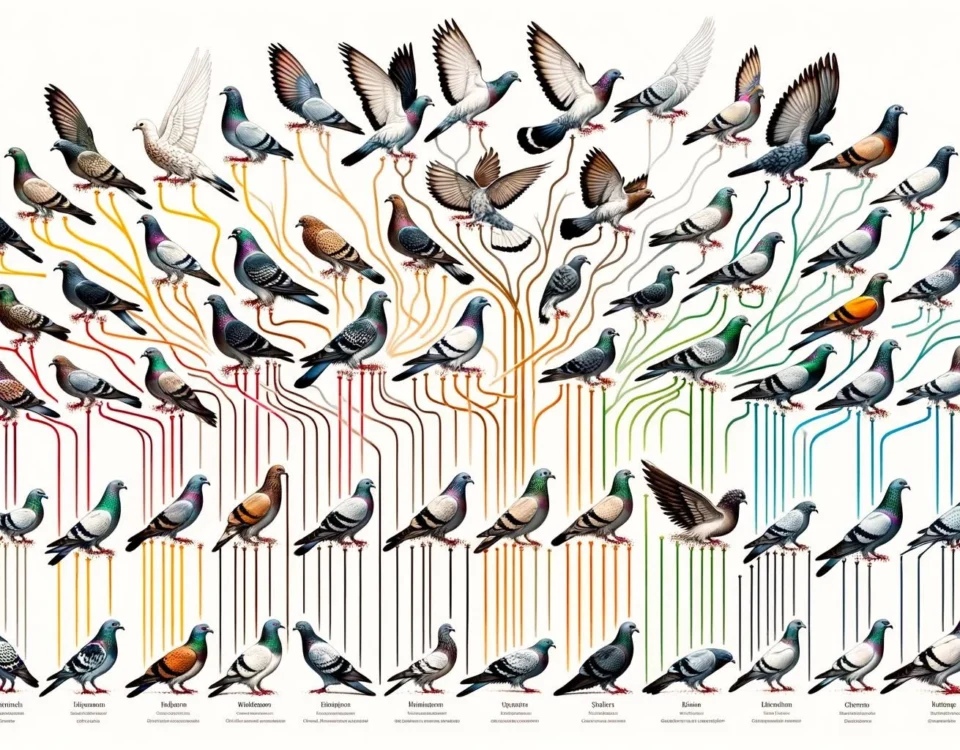Unraveling the world of wild pigeons uncovers a fascinating blend of biological diversity, historical significance, and intriguing roles in scientific research. These often overlooked city dwellers not only exhibit a range of characteristics akin to other wild species, but they also descend from the wild rock pigeon, the progenitor of all domestic breeds. Pigeons’ cognitive abilities have made them valuable contributors to psychology and behavioral studies, while their historical roles range from being a food source for Neanderthals to serving as messengers in ancient civilizations.
Key Takeaways
- Wild pigeons are often ignored by ornithologists but can be found roosting in cities across the world.
- Pigeons are used in research, particularly in psychology experiments involving cognition and learning.
- The characteristics of pigeons, such as color patterns and beak size, can vary similar to wild animal species.
- The rock pigeon is the wild type, or founder species, from which domestic pigeons have descended.
- Pigeons have been used for communication and were a staple food source for Neanderthals and humans in the past.
Pigeons are commonly used in psychology research and behavioral experiments involving cognition and learning. They are particularly well-suited for these studies due to their ability to judge the passage of time and their capacity for associative learning. Researchers have found that pigeons can accurately discriminate between different durations of time and show sensitivity to temporal event information.
For example, in one study, pigeons were trained on temporal discriminations involving 2 and 10-second intervals. When the sample was white, the pigeons were required to refrain from pecking a response key for 2 seconds, while if the sample was red, they were required to refrain for 10 seconds. This research suggested that pigeons, like humans, judge the passage of time in terms of the rate at which relevant events occur.
Characteristics of Wild Pigeons
The characteristics of pigeons can vary, just like those of wild animal species. For example, the Fantail breed of pigeons has a broad, upturned tail, similar to the wild turkey. The male cardinal also has a crest on its head, similar to some pigeon breeds. Additionally, beak size and shape can vary dramatically among different pigeon varieties.
The wild type, or founder species, of domestic pigeons is the rock pigeon of Eurasia. Domesticated pigeons have been selectively bred over centuries for various traits, resulting in the diverse breeds seen today. Molecular evidence suggests that racing homer pigeons, a breed that has regular opportunities to fly outside the loft and potentially escape, are closely related to the wild rock pigeons.
Pigeons in Historical and Culinary Contexts
Pigeons have played significant roles throughout history. There is evidence that wild pigeons were a staple food source for Neanderthals and later humans. Domesticated pigeons have also provided invaluable services, such as long-distance communication, for many different civilizations. From the ancient Romans to Genghis Khan, pigeons were used as messengers to deliver important information over long distances.
Furthermore, pigeons have been consumed as food throughout history. In some cultures, they are still consumed today. Their meat has been enjoyed for its taste and nutritional value. As for their economic impact, feral pigeons can cause damage to human infrastructure, leading to costs associated with cleanup and maintenance.








